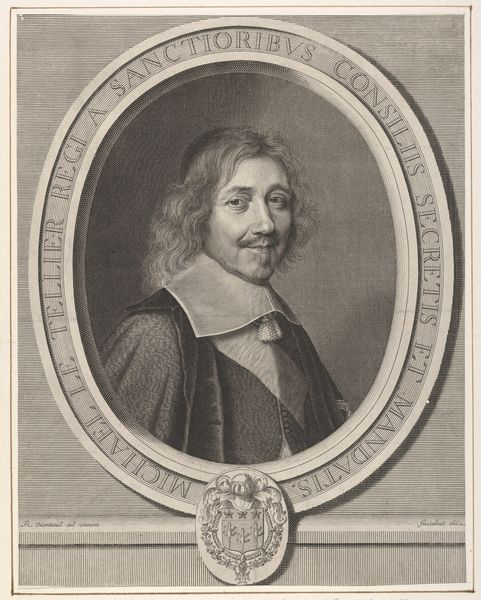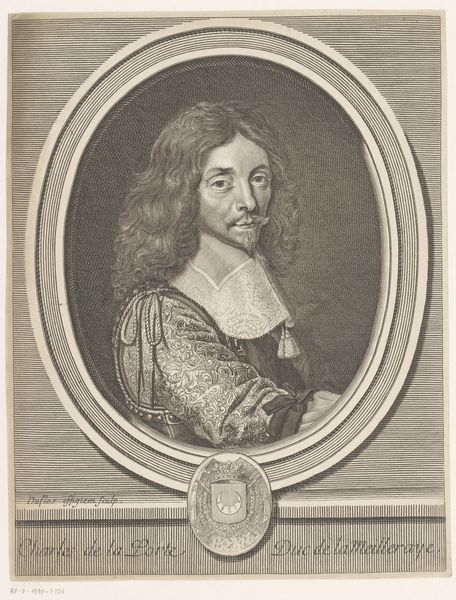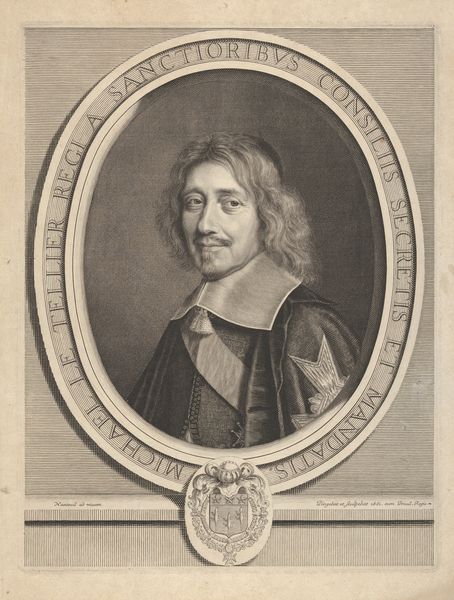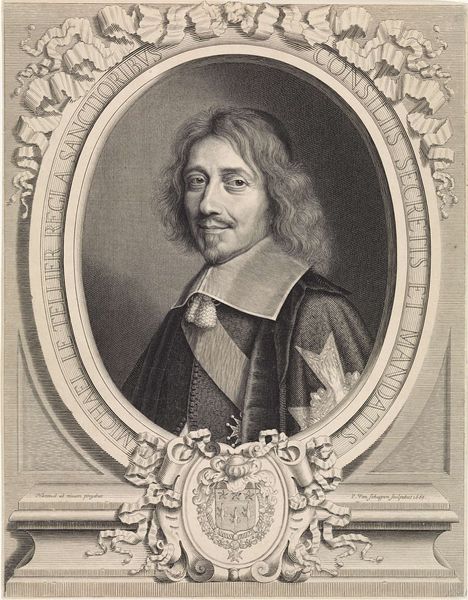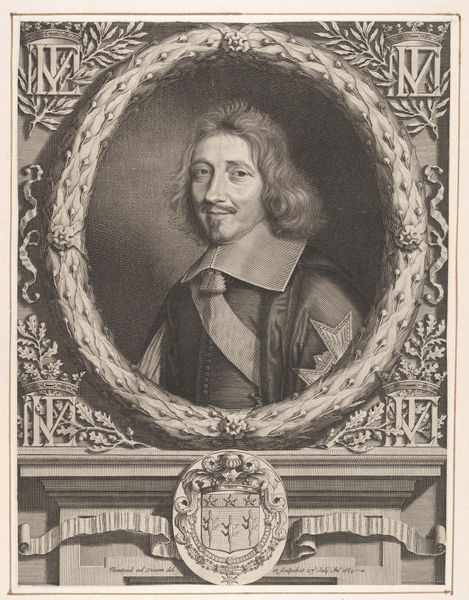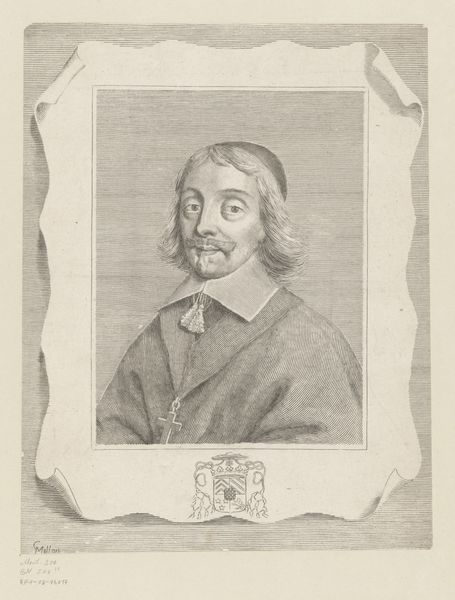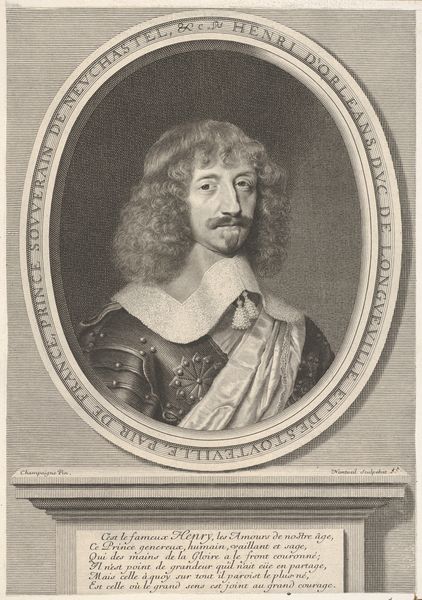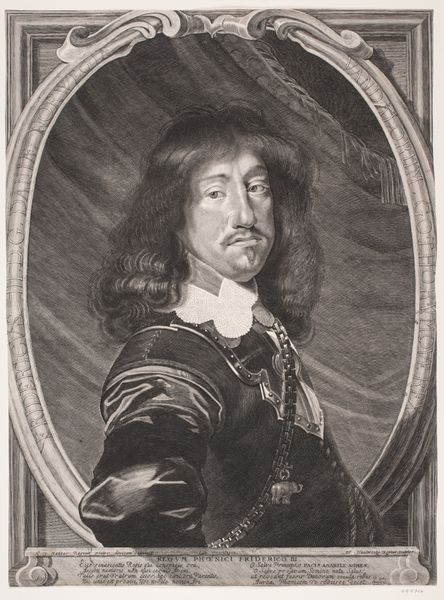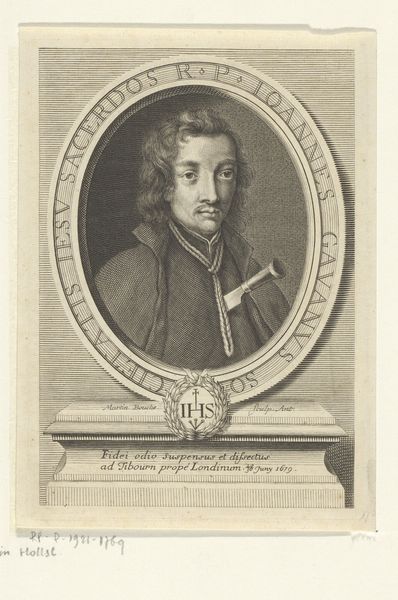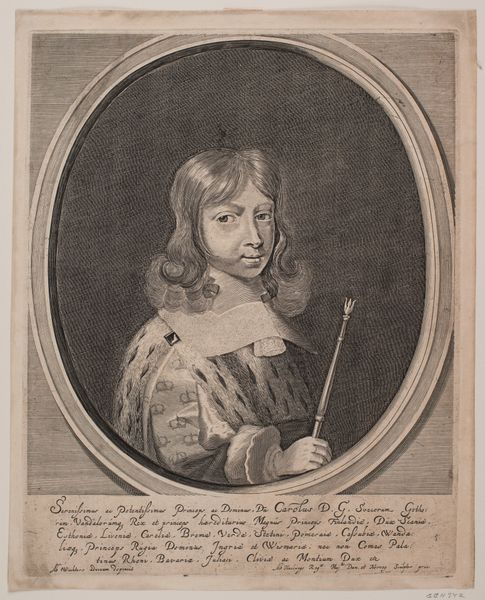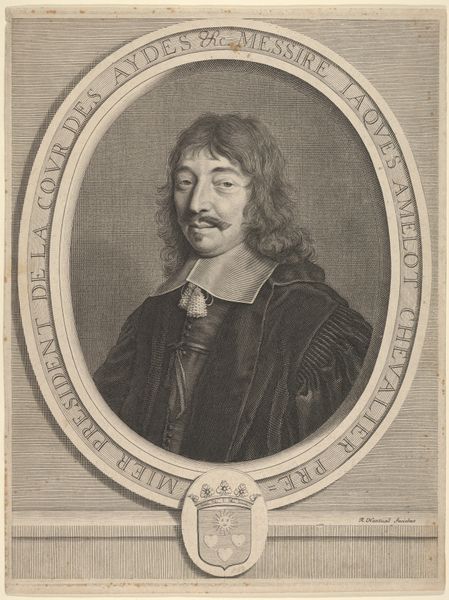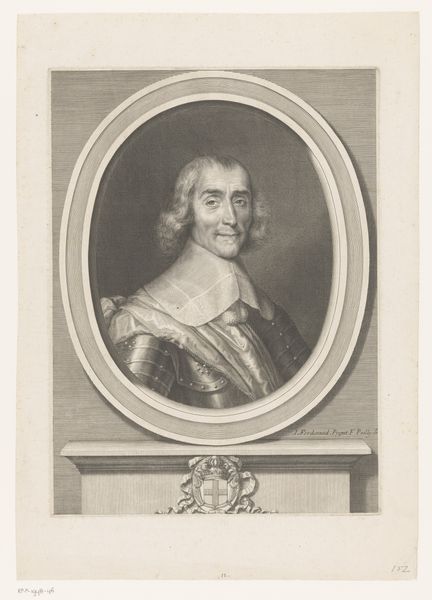
drawing, metal, engraving
#
portrait
#
drawing
#
baroque
#
metal
#
line
#
academic-art
#
engraving
Dimensions: height 347 mm, width 239 mm
Copyright: Rijks Museum: Open Domain
This is Michel Lasne's portrait of Michel Le Tellier, rendered as an engraving. Lasne, who lived between 1590 and 1667, was working during a time of significant social stratification, where portraits served not just as likenesses but also as assertions of status and power. The portrait captures Le Tellier with a composed, self-assured gaze, embodying the qualities of leadership and authority expected of someone in his position. The elaborate attire and the heraldic symbols at the bottom are visual testaments to Le Tellier’s noble lineage and high rank. It reflects the values of a society where identity was closely tied to social standing. The very act of commissioning a portrait was laden with meaning, reinforcing the subject's place within the societal hierarchy. Engravings like this were more than mere images; they were tools for constructing and disseminating particular narratives about identity and power. Consider how these images shaped perceptions and perpetuated social norms.
Comments
No comments
Be the first to comment and join the conversation on the ultimate creative platform.
